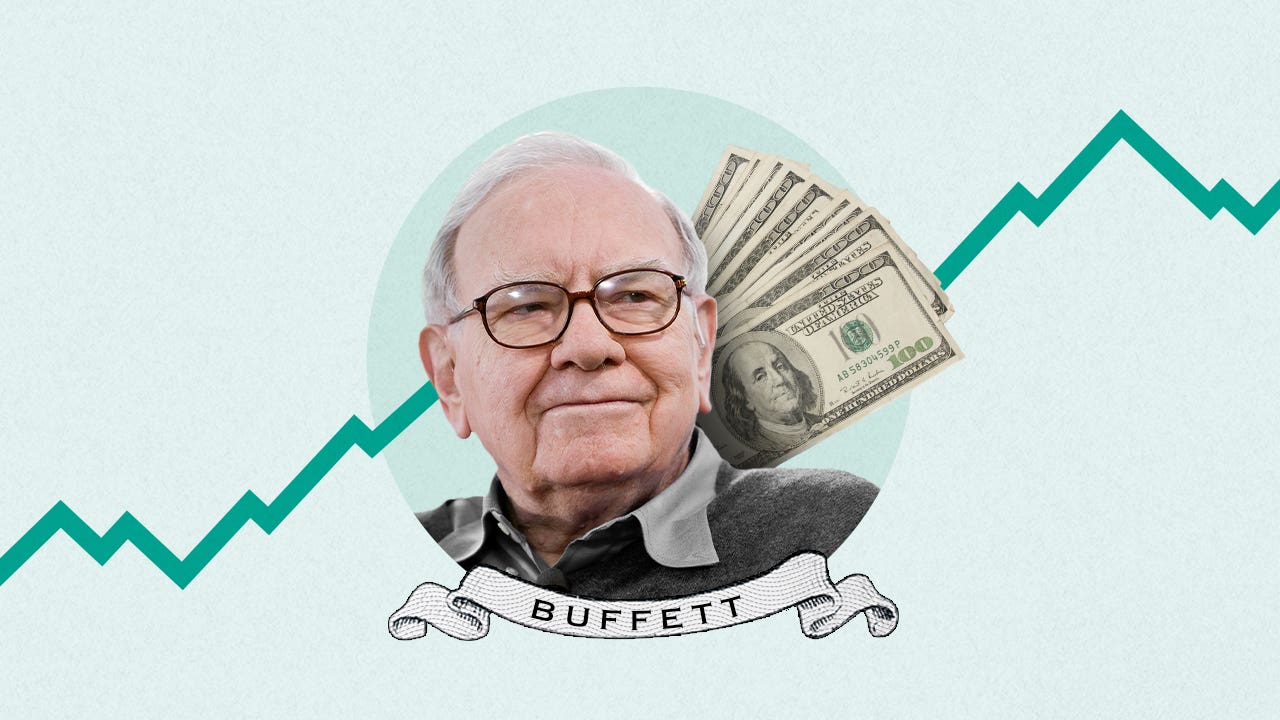8 essential rules to invest like Warren Buffett

Stocks have seen significant declines so far in 2025, with the S&P 500 briefly entering bear market territory following new tariffs from President Donald Trump’s administration. Markets surged after a 90-day pause on the tariffs for most countries was announced, but the selling resumed as investors assess the impact on the global economy.
The sell-off could create opportunities for long-term investors, an approach legendary investor Warren Buffett has used to become one of the greatest investors of all time. Buffett’s investment performance was achieved by following a set of basic principles that all investors can learn from, even if they don’t necessarily lead to the same results.
Here are some tips for how to invest like Warren Buffett that should aid your long-term investment results. If you are looking for more professional help managing your investments, you may want to consult with a financial advisor, who can help you develop a plan for your individual situation.
1. Remember that stocks are businesses
People often think of the stock market as a fast-paced environment where prices flash on the screen and buy and sell decisions are made constantly. But Buffett reminds investors that stocks represent ownership stakes in real businesses. No serious business person would buy an entire business and then sell it a few minutes or weeks later.
“Please note particularly that we own publicly-traded stocks based on our expectations about their long-term business performance, not because we view them as vehicles for adroit purchases and sales,” Buffett wrote in his 2022 letter to shareholders.
2. Buy with a margin of safety
Buffett follows an intrinsic-value-based approach to buying businesses and stocks, which means he determines what a business is worth based on the cash it will produce in its remaining life. But once he’s determined the approximate intrinsic value of a business, he wants to buy at a meaningful discount to that number.
The gap between the price you pay and the intrinsic value is known as the “margin of safety,” which Buffett once said were the three most important words in investing. The margin of safety provides the investor with some protection if their assumptions about the business end up being wrong.
3. Ignore stock market predictions
There’s no shortage of analysts or market commentators who are happy to tell you what they think the market will do next. It’s best to ignore them, Buffett says.
“Forming macro opinions or listening to the macro or market predictions of others is a waste of time,” Buffett told shareholders in his 2013 letter. “Indeed, it is dangerous because it may blur your vision of the facts that are truly important.”
4. Identify quality businesses with strong returns on capital
Buffett’s ideal business is one that generates high returns on the capital invested in the business. These businesses tend to generate lots of cash flow for shareholders and may have some advantage that allows them to earn high returns.
Buffett often describes See’s Candy, which Berkshire owns, as his ideal business because it earns high returns on capital, has pricing power and requires little capital to grow. In 2015, Buffett said See’s had earned $1.9 billion in pre-tax earnings for Berkshire since its acquisition, while requiring only $40 million in additional capital.
Need expert guidance when it comes to managing your investments or planning for retirement?
Bankrate’s AdvisorMatch can connect you to a CFP® professional to help you achieve your financial goals.
5. Look for competitive advantages
Once you’ve identified a business that earns high returns on capital, you’ll also want to look for a competitive advantage that allows those returns to be sustainable. It’s the nature of capitalism that high returns will be attacked by competitors who also want to earn high returns.
Buffett refers to these competitive advantages as “economic moats” that protect the business’ “castle” from threats. These advantages might include a strong brand such as Coca-Cola or Apple, or a cost advantage such as the one enjoyed by auto insurer Geico.
6. Stay within your circle of competence
Buffett has also stuck to only investing in businesses that are within what he calls his “circle of competence.” This means he has to be able to understand the business and have a good idea of what it will look like in the future.
For years, Buffett avoided technology investments because he felt they were outside his circle of competence. It’s not so much that he couldn’t understand these businesses, but that he didn’t feel comfortable predicting where they’d be five or 10 years down the road.
“If you have doubts about something being in your circle of competence, it isn’t,” Buffett said in 2002.
7. Concentrate your investments in your best ideas
Diversification is often touted as a cornerstone of investing by experts and financial advisors. But Buffett has long argued that if you know how to value businesses, diversification makes no sense. In fact, just five companies accounted for about 71 percent of Berkshire’s portfolio at the end of 2024.
“You know, we think diversification is — as practiced generally — makes very little sense for anyone that knows what they’re doing,” Buffett told shareholders in 1996. “Diversification is a protection against ignorance.”
Buffett added that there’s nothing wrong with being ignorant when it comes to analyzing businesses. For those investors, he recommends holding a diversified index fund, such as one that tracks the S&P 500.
8. Take advantage of market downturns
Bear markets and market downturns are inevitable when it comes to investing, and Buffett has used them to his advantage through the years. Investors should always be trying to get the most value while paying as little as possible, and market downturns often lead to attractive prices.
In the 2008 financial crisis, Buffett sprung into action, taking positions in Goldman Sachs and other beaten down financial companies. He also bought the BNSF Railway in 2009, which has become an important asset for Berkshire Hathaway.
“I will tell you how to become rich,” Buffett once said. “Be fearful when others are greedy, and be greedy when others are fearful.”
Editorial Disclaimer: All investors are advised to conduct their own independent research into investment strategies before making an investment decision. In addition, investors are advised that past investment product performance is no guarantee of future price appreciation.
You may also like






